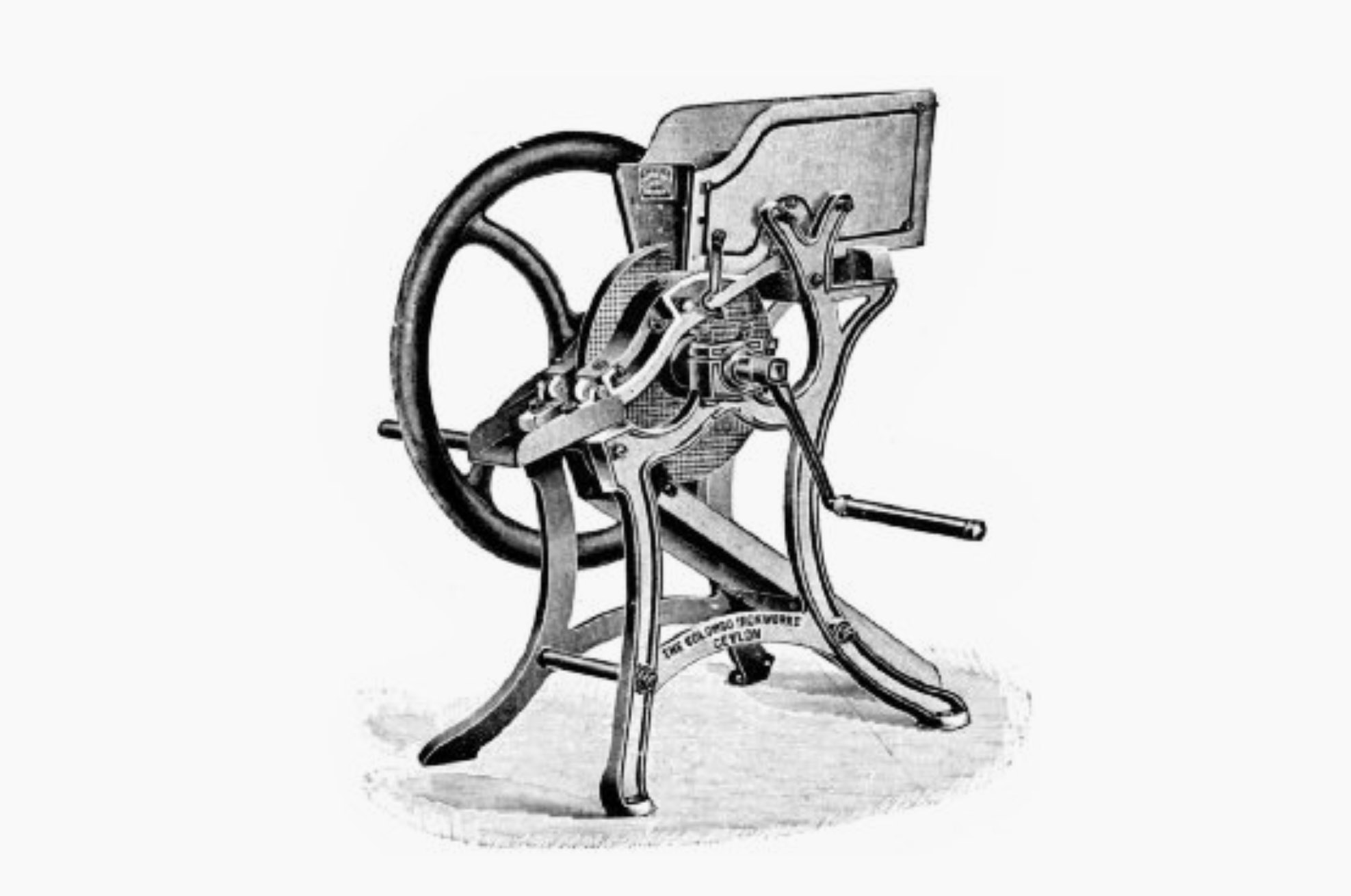In this video, we take you to the beneficio at Finca La Senda, Guatemala where millers load the reception tank which gravity feeds into the drum pulper below. This gravity fed system does not require additional water to feed the cherries into the machine.
 آلة ووكر "Walker" الأصلية لإزالة القشر التي سُجلت براءة اختراع بها عام 1860.
آلة ووكر "Walker" الأصلية لإزالة القشر التي سُجلت براءة اختراع بها عام 1860.
Pulping removes the exocarp and the outer mesocarp from the cherry. It’s a delicate operation because if the parchment layer is cut through and the beans are damaged, microbial attack can rapidly advance. Getting pulping right is a matter that underpins the financial and ecological health of coffee-growing regions that use the wet and pulped natural processes. Preventing blockages in the pulper whilst also avoiding the loss of too much parchment coffee as the pulp is removed are major issues for all processors, from small-scale farmers to huge factories.
Water is not strictly needed for a pulper to operate but it is widely used to help feed the cherry into the pulper. In a traditional wet mill, all the processing steps — from the reception tanks up until the coffee hits the التخمير tanks — consume 40 cubic metres of water per metric tonne of coffee (J. C. Vincent, 1987). Pulpers that use a lot of water and agitate the beans too violently can introduce a large amount of fibre into the water, which is very difficult to remove without sophisticated equipment. This makes recycling the water more difficult.
وتكون مهمة المزارعين الذين ينتهجون القطف الانتقائي ثم يستخدمون طريقة الطفو أسهل بكثير عند إزالة القشر، فليس عليهم القلق حيال إتلاف معداتهم بسبب طراوة ثمار الكرز الناضج التي تمر بسهولة عبر مختلف أنواع آلات إزالة القشر. ولكن حتى أفضل عمليات التصنيف المسبق لا يمكنها تجنب الاختلاف في أحجام كرز القهوة بين دفعة وأخرى. ويجب معايرة كل آلة لإزالة القشر بالشكل الصحيح وصيانتها دوريًا لتجنب الخسائر.
Among the several pulping systems,